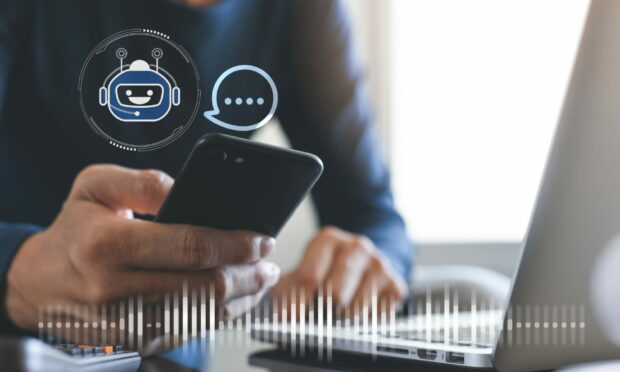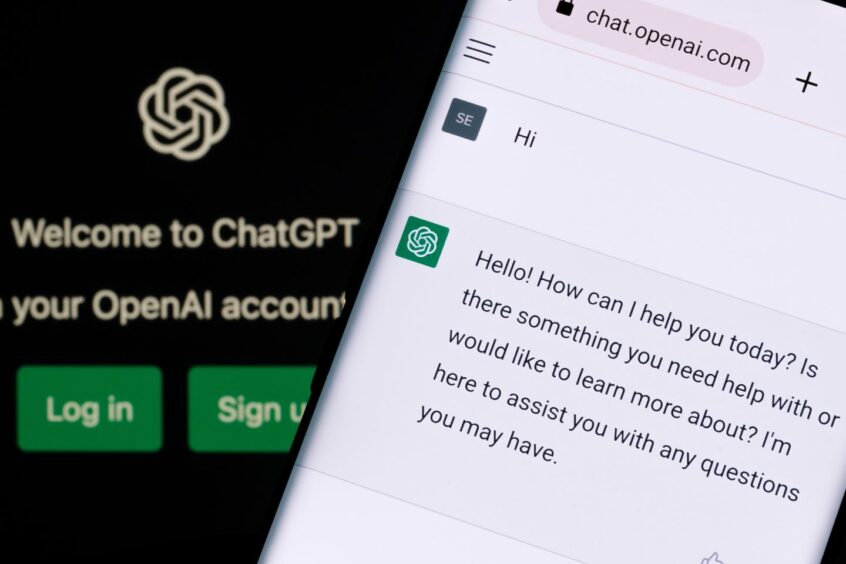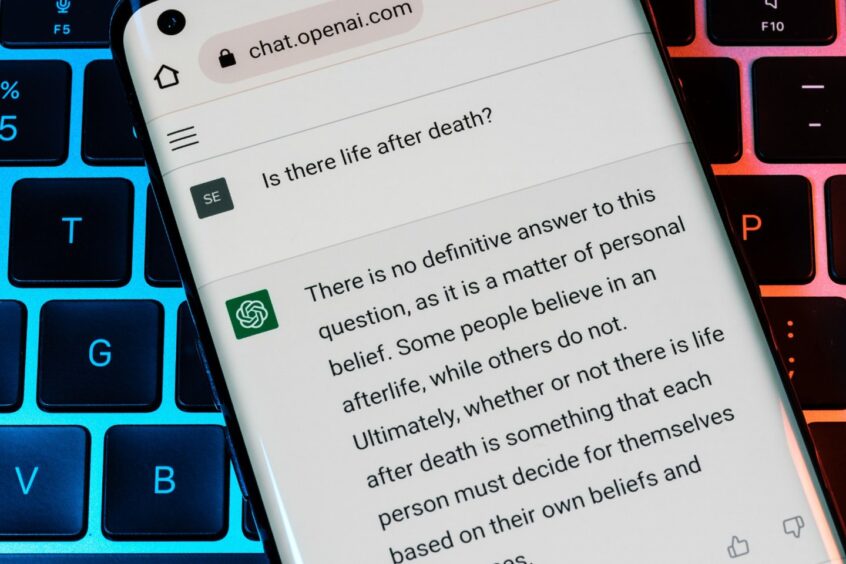As someone who models language, I am fascinated by the development of chatbot technology and its impact on our daily lives.
From customer service to personal assistants, chatbots are becoming increasingly ubiquitous in our interactions with technology.
But with this rise in usage come new questions and challenges. How do we ensure the ethical and responsible use of chatbots?
Can they understand and empathise with human needs?
You will no doubt be surprised to learn my words up until this point were written unaided by a chatbot.
While they are not going to win any awards for creativity, although they merit top marks for grammar, I doubt the chatbot is going to take over the role of columnists any time soon.
However, I do believe the time has come to start taking them a bit more seriously.
ChatGPT is only the second chatbot in history to have passed the famed Turing Test – a challenge of a machine’s ability to exhibit intelligent behaviour that it is, in most cases, indistinguishable from a normal human conversation.
It is a very popular and accessible chatbot you can access by simply creating a free account. Within minutes you can be chatting with your very own piece of artificial intelligence (AI) – a technology that learns from you, helps you, remembers, and reminds you whether it is the recycling or rubbish that needs to go out for bin day.
Are all chatbots made equal?
There are two types of this technology you will come across in day-to-day life, the first and most well-known being simple chatbots.
These return predefined responses by reading your question and matching any keywords you may have included in your query.
A simple chatbot will return either a link to a useful web page or connect you directly to a real person to resolve your problem.
The other type are “smart” chatbots and these are on the rise. They use a technique known as natural language processing (NLP) to help simulate near-human interactions.
They resolve and undertake common tasks such as managing product returns, adding extra baggage allowance to a flight reservation or rescheduling a medical appointment.
Chatbots are a tried and tested technology. They save us valuable time and resources by automating quite ordinary yet burdensome tasks, freeing up our time for other things.
They provide instant and more consistent answers in a world where we expect, rightly or wrongly, 24/7 customer service. The most advanced NLP chatbots can learn from previous interactions and improve over time, reducing the number of complaints from frustrated customers.
Chatbots offer a glance into the world of AI, and this is just the beginning of what is possible for self-awareness in computers.”
Omnichannel experiences allow the same chatbot to operate on whichever platforms take your fancy. You may wish to start a conversation on WhatsApp but resume it by email on your PC. It is a seamless experience, thanks to the centralised configuration.
Chatbots can also be beneficial to businesses in ways you may not think of.
In the hotel industry, for example, operators can now offer a cloud-based digital concierge to meet a customer’s every need. Integrating it with the correct ‘middleware’ joins everything up. You could, in theory, automate the entire process of room service.
It is only a matter of time before we all have chatbots assisting our everyday lives.”
With a friendly chatbot, it’s also possible for any business to co-ordinate the delivery of goods and services with customers by using their mobile phone’s location-based services. This helps to make sure they are available to receive deliveries.
This may sound very futuristic but the technology to make it all possible is available.
It is only a matter of time before we all have chatbots assisting our everyday lives.
But disadvantages are still commonplace and it will be years before the creases are sufficiently ironed out.
There are also considerations around areas such as data protection and copyright.
ChatGPT-4 is making its entrance onto the world stage at the time of writing, which shows Silicon Valley is serious about making the technology work.
But the industry still has a lot to learn. Vast amounts of time, resources and technical expertise are needed to develop chatbots to suit business needs, not to mention the occasional downtime for updating the operating system.
Most importantly, machines are a poor judge – compared to their human counterparts – in weighing up the severity of a situation.
AI will stop at nothing to succeed in its mission to provide the best possible service.”
As a result, a chatbot may sour a healthy working relationship between you and your customers if people are made to jump through tedious hoops to get issues escalated.
Taking everything into account, I believe chatbots are here to stay.
Their constant drive to learn more about the user and products shows beyond doubt that AI will stop at nothing to succeed in its mission to provide the best possible service.
Chatbots offer a glance into the world of AI, and this is just the beginning of what is possible for self-awareness in computers.
Ryan Gow is a portal software developer at the University of the Highlands and Islands (UHI) and computing lecturer at UHI North Highland.





Conversation